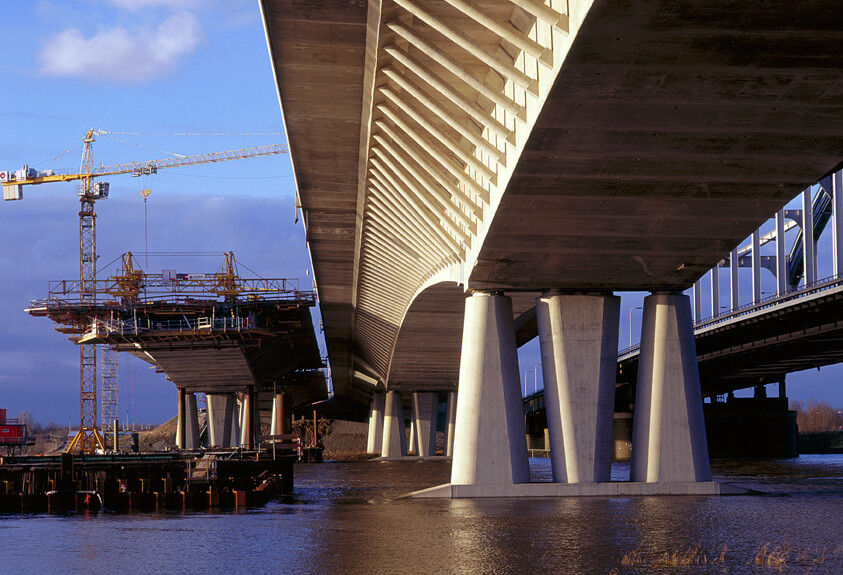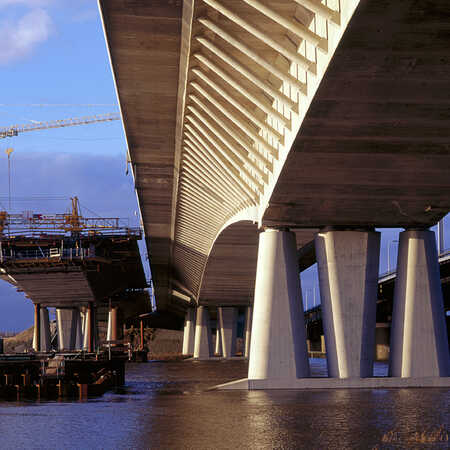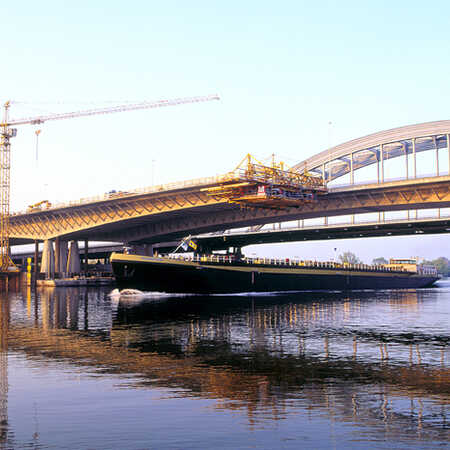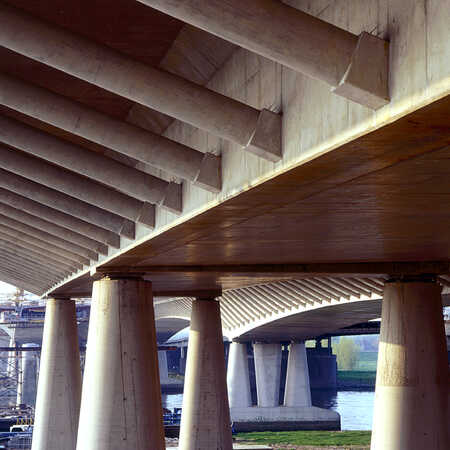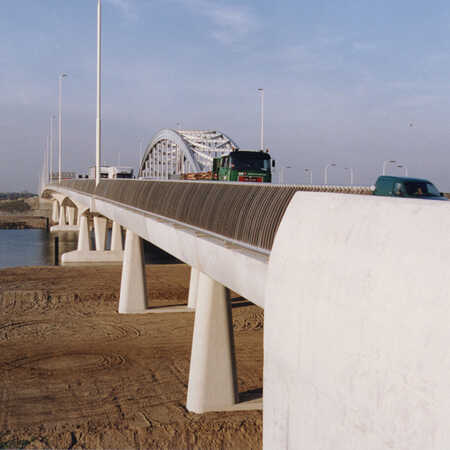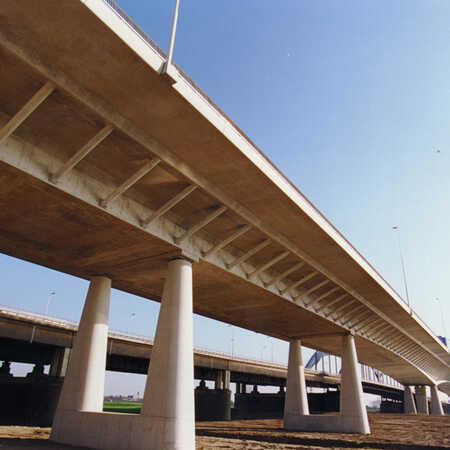082.07
Second and Third Bridge over the Lek for the motorway A2
The capacity of the existing steel arch bridge across the Lek river at Vianen was too limited to continue coping adequately with the traffic, and a second, new bridge was needed for the A2 motorway.
Rijkswaterstaat (the Directorate-General for Public Works and Water Management) asked the architects ZJA to design various options for a new bridge. The research led to a number of different proposals. The preferred solution turned out to be the cantilever span bridge. A concrete construction was cast on site, constructed like an extending collar from each side of the pier. The beams on each side of the column hold each other in equilibrium like the arms of a balance. The ends of two extended and tapered beams meet in the middle of the span.
At first the relationship to the existing bridge played a significant role in the design. The new bridge is higher than the existing one, but it could not obstruct the view from the old bridge. It was only later on that the decision was taken to build another bridge to replace the old arch bridge. Now there are plans for a third bridge.
The alignment of a series of compression members beneath the road deck is characteristic of a standard concrete extension bridge. This new variant uses a single beam span combined with angled, prefabricated concrete compression members, set at a slant beneath the overhanging bridge deck. The single beam and the spatial effect of the fanned-out compression members give the bridge an unusually slender appearance.
The total cross-river distance is 532 metres long and measures 29 metres wide, while the main span measures 153 metres. The principal piers in the water are composed of three conical uprights. The two outermost columns taper upwards, the middle one tapers in the opposite direction. The supports in the floodplain beneath the viaduct approaches have to take less strain, so the middle column has been left out. All the columns have similar casing, whether they taper upwards or downwards.
The bridge’s parapet is made entirely of aluminium. The basic premise for the parapet was the experience of the motorist from the road. The goal was to offer an unobstructed view of the river landscape. In order to achieve as transparent and as calm a visual effect as possible for the passing motorists, it was decided to use closely spaced thin posts instead of a few thicker posts spaced further apart. When passing at high speed, the thin posts merge into a transparent screen, whereas a few thicker ones would have flashed by one by one. Although the old bridge would eventually be dismantled, at the time the design was drafted it was important that the parapet on the new bridge, which is at eye level seen from the existing bridge, would cause as little obstruction as possible.
Project: #082
Related
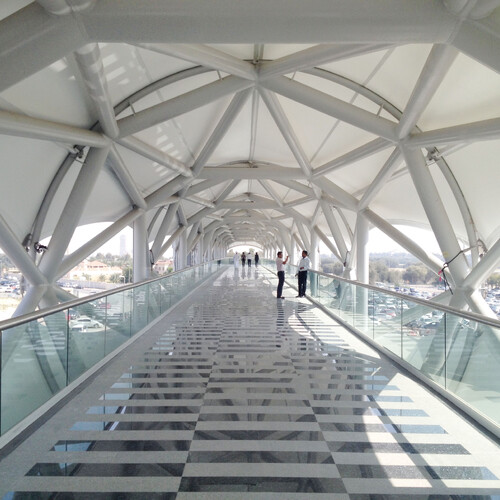
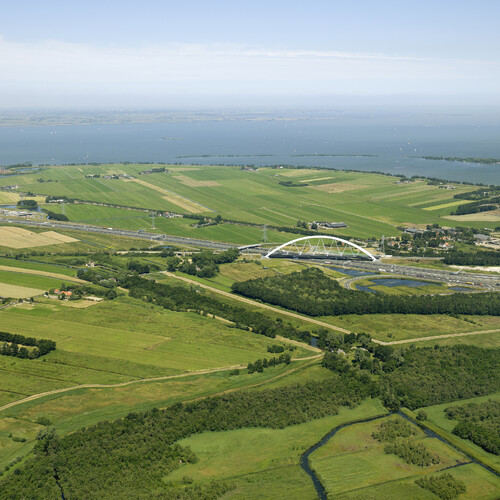
Road expansion A1/A6 Diemen – Almere Havendreef
Between Amsterdam and Almere
It seems an odd question: is it possible to drastically improve the infrastructure of the northern part of the Randstad, between Diemen and…
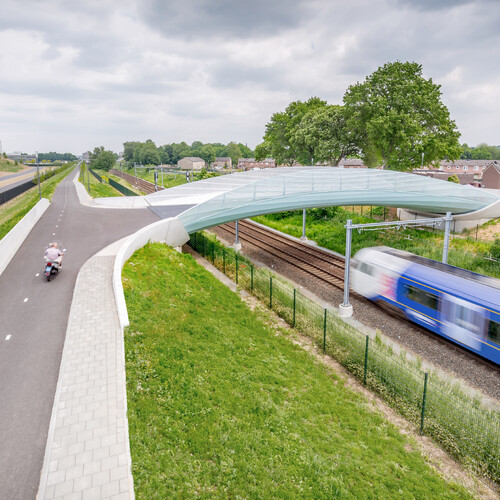
Bicycle and pedestrian bridge, Sittard-Geleen
The bicycle and pedestrian bridge over the railway line Sittard-Geleen, a design by the architectural studio ZJA, intends to simplify and…
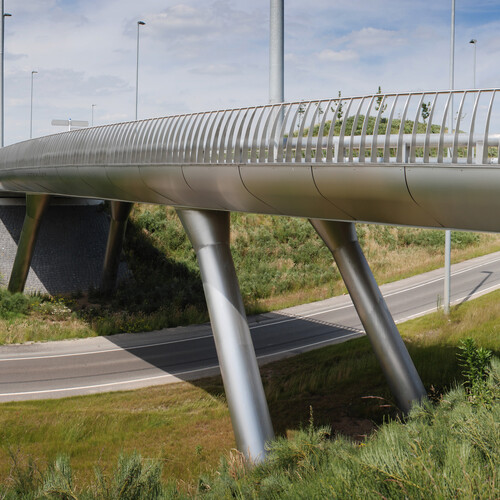
Bridge in Eindhoven
A carefully designed bridge for a seemingly common business park seems quite exceptional. But then, Meerhoven near Eindhoven is a special…
